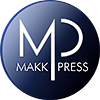Timely Drafting Template USA
Sokkia Economy Hard Cover Field Book, 80 Page/Size 4-1/2 x 7-1/4"
Sokkia Hard Cover Cross-Section Book, 80 Page/Size 6-1/2" x 8-1/2"
SitePro Transit Field Book
Sokkia Economy Soft Cover Field Book, 32 Page/Size 4-1/2 x 7-1/4"
Sokkia Hardcover Mining Transit, 80 Page/ Size 4-1/2" x 7-1/4" Field Book
Sokkia Hard Cover Level Book
SitePro Level Book
Geomax Transit Field Book, Size 4-1/2 x 7-1/4
Geomax Hard Cover Cross-Section Book, 80 Page/Size 6-1/2" x 8-1/2"
Geomax Field Book 4 1/2 X 7 /14
FAQs About Field Books
A field book is a durable, specialized notebook designed for recording data and notes in outdoor or rugged environments. Unlike a standard notebook, a field book features water-resistant or waterproof paper, ultra-durable covers, and specific grid patterns tailored for professions like surveying, geology, and engineering. It's built to protect your invaluable data from the elements.
Field books are essential tools for a wide range of professionals and students, including:
- Land Surveyors
- Civil Engineers
- Geologists & Archaeologists
- Environmental Scientists & Biologists
- Construction Foremen
- Landscape Architects
- Anyone who needs to record critical data outdoors.
A regular notebook is not a reliable tool for field work. Its paper will tear, smudge, and disintegrate when exposed to rain, humidity, or mud. The cost of losing a day's, or a week's, worth of data far outweighs the investment in a proper field book. Our field books are designed as professional grade equipment to ensure your notes survive the same conditions you do.
Choosing the right pattern is crucial. Each is designed for a specific task. Here are the most common types we carry:
- Field / Survey Pattern: This is the industry standard for surveyors. It features a grid of 4x4 or 8x8 squares per inch on the right page for sketches and plats, with vertical blue lines and a central red line. The left page is ruled for notes and calculations.
- Level Pattern: This pattern is ruled into six columns on both pages for recording leveling data, including common headings like Station (STA), Backsight (BS), Height of Instrument (HI), Foresight (FS), and Elevation (ELEV).
- Transit Pattern: This pattern is designed for recording angular measurements taken with a transit or theodolite. The left page has columns for angles and distances, while the right page has a grid for sketching.
- Cross-Section Pattern: Features a detailed 10x10 grid on both pages, perfect for plotting profiles, cross-sections, and other detailed drawings to scale.
- Journal / Lined Pattern: A standard lined page for extensive notetaking, observations, and daily logs where drawings are not the primary focus.
This often comes down to personal preference and worksite conditions.
- Sewn Bound Books: These are the most durable and archival-safe option. The signatures are sewn together, meaning pages will never fall out. They are the standard for legal and long-term records.
- Spiral Wire-O Books: These books have the advantage of laying perfectly flat and allowing you to fold the cover back 360 degrees, which is convenient when you have limited space or need to hold the book in one hand.
Hardcover: Offers maximum durability and protection. The rigid cover also provides a firm, flat surface to write on, which is invaluable when you don't have a desk or flat surface available.
Softcover (e.g., Fabrikoid): More flexible and lightweight, making it easier to slip into a vest pocket or pack. It still offers excellent water and wear resistance. Choose a hardcover for ultimate protection and a softcover for portability.
Proper record-keeping is vital. Here are the best practices:
- Use a permanent ink pen or a dark pencil.
- Never erase a mistake. Instead, draw a single line through the error, write the correction above, and initial it. This maintains the integrity of the original data.
- Number your pages and keep a table of contents at the front.
- Start each day on a new page, noting the date, project name, location, weather, and team members present.
Built for the Field: Durable & Reliable Field Books
For surveyors, engineers, geologists, and field scientists, your notes are your most valuable asset. A professional field book is more than just a notebook, it's a purpose-built tool designed to protect your critical data from the elements. Featuring water-resistant paper, rugged covers, and industry-specific grid patterns, these books ensure your measurements, observations, and calculations survive the toughest job site conditions.
What Makes a Field Book Essential?
Unlike a standard notebook that can be ruined by a single rain shower, a field book is engineered for outdoor work. The "all-weather" paper repels water, mud, and sweat, preventing smudges and tears. This durability means you can write in any condition without fear of losing a day's work. It's an indispensable piece of equipment for ensuring your field records are clear, permanent, and professional.
Choosing the Right Field Book Pattern
The grid pattern inside your book is designed for specific tasks. Selecting the right one is key to efficient and organized data collection:
- Field / Survey Pattern: The industry standard for surveyors. Features a grid on the right page for sketches and a ruled left page for notes and calculations. Ideal for general note-taking and mapping.
- Level Pattern: Ruled into six columns on both pages for recording leveling data, with standard headings like Station (STA), Backsight (BS), Height of Instrument (HI), and Foresight (FS). Perfect for topographic and construction work.
- Transit Pattern: Designed for recording angular measurements. The left page has columns for angles and distances, while the right page features a grid for sketching traverses.
- Cross-Section Pattern: Features a detailed 10x10 grid, ideal for plotting profiles, cross-sections, and other scaled drawings with precision.
- Journal Pattern: A standard lined pattern for extensive written logs, daily reports, and detailed observations where drawings are less frequent.
Complete Your Field Toolkit
A great field book is the start. Make sure you have the right accessories for a productive day on site.













